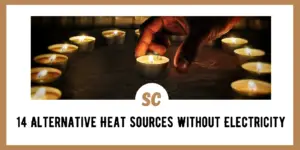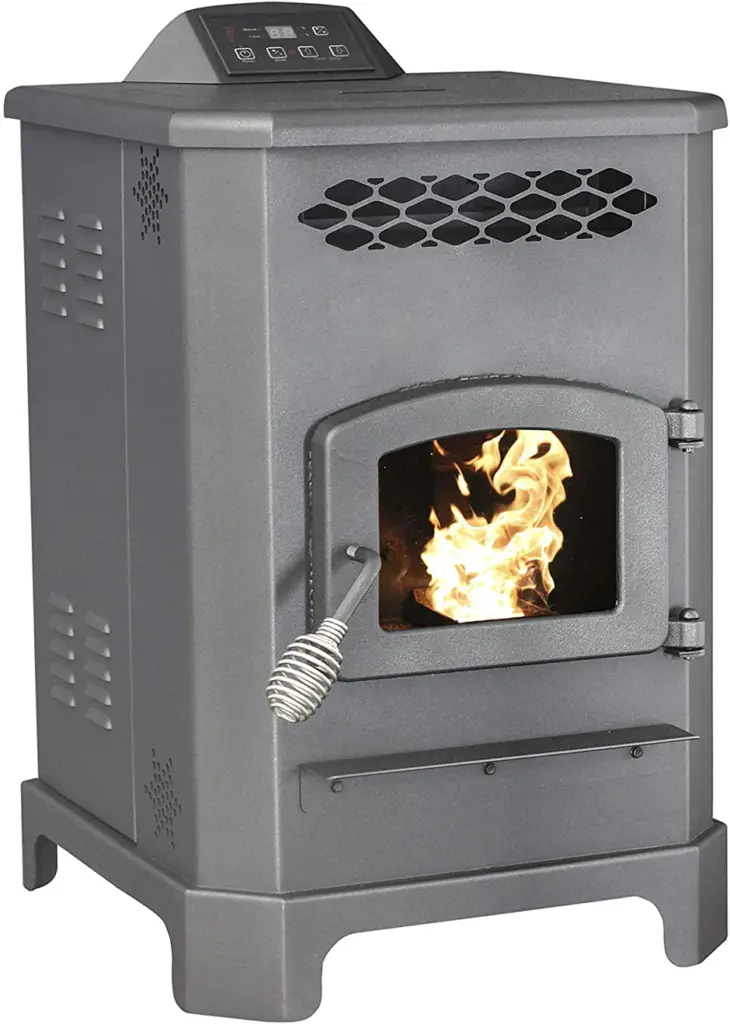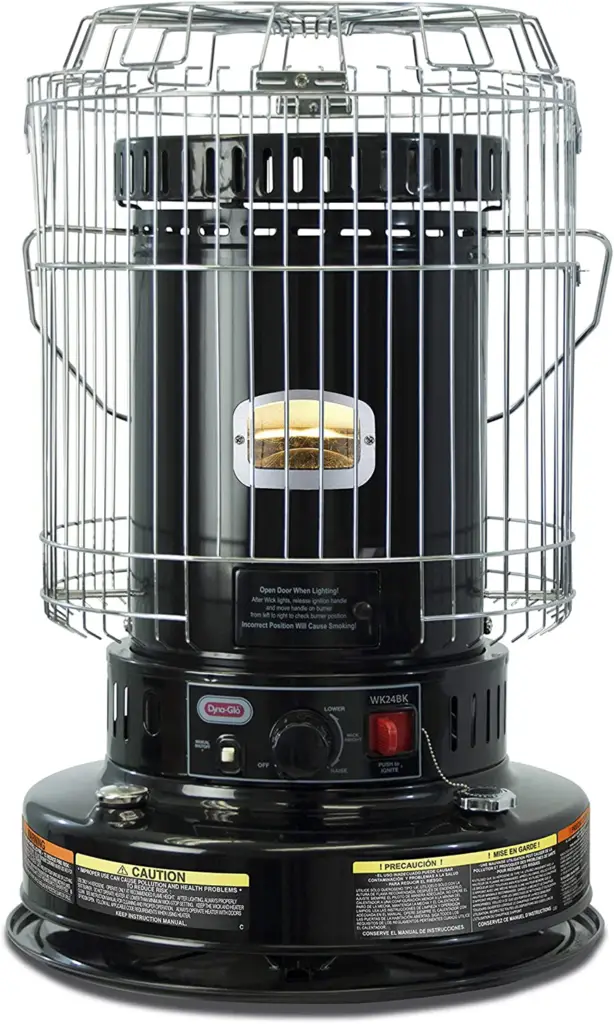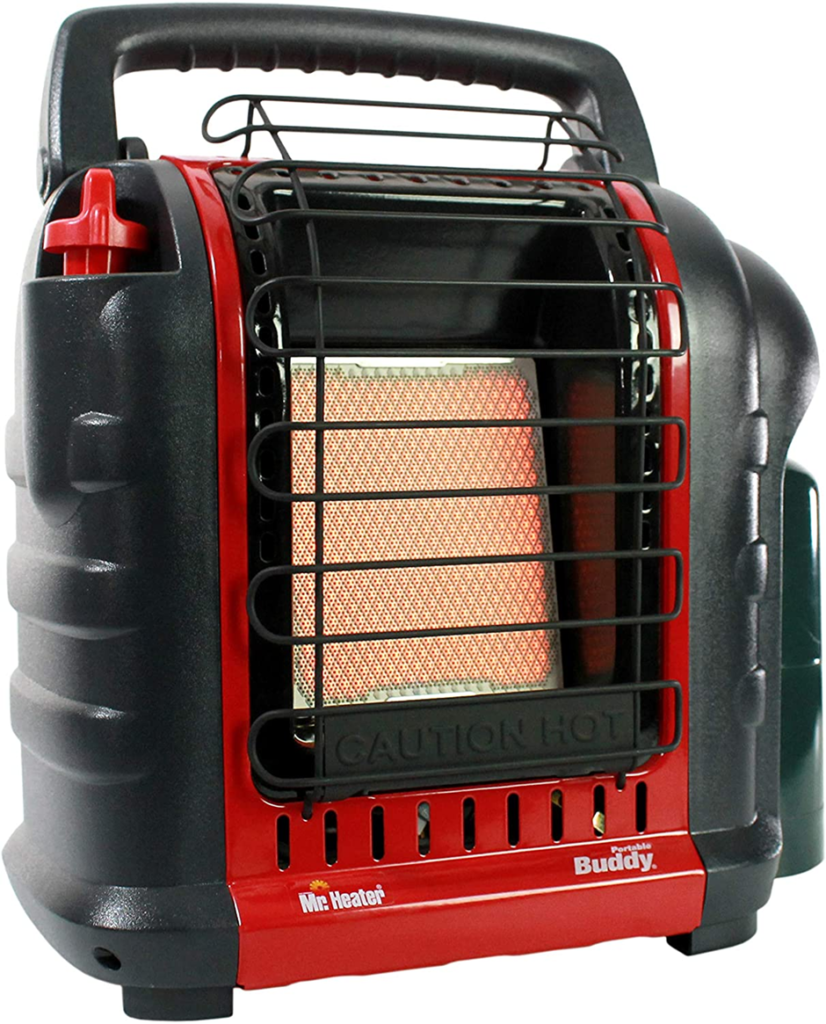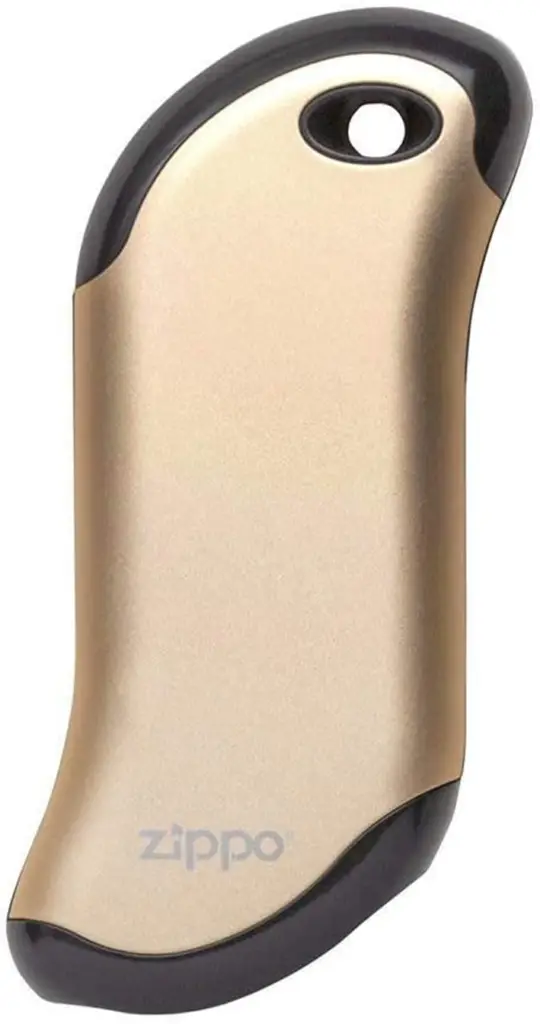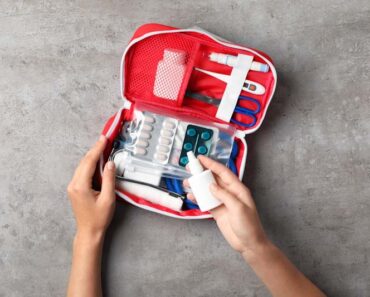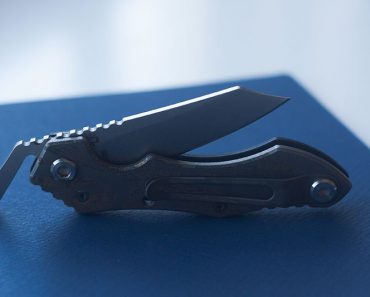One of the first things anyone comes across when they start learning about survival skills and emergency preparedness is the Rules of Three. If you are new to the subject, the Rules of Three state that you can survive:
- Three minutes without air
- Three hours without shelter
- Three days without water
- Three weeks without food
The timeframes within the rules are not absolute, but the order of the rules help you to prioritize your needs.
The version of the rule above is a bit dated as it really isn’t about shelter, it’s about temperature regulation. You should think of the updated version as saying: “You can survive three hours without maintaining core body temperature.” This means you need to know how to stay cool in hot conditions, and warm in cold conditions.
In this article, I will be focusing on the latter and – more specifically – staying warm without electricity. This could be due to a power outage or if you find yourself without access to electricity.
Safety Concerns
Before jumping into the various methods for staying warm, I first want to address some safety concerns that you should keep in mind.
Carbon Monoxide Poisoning
Carbon monoxide poisoning occurs when we burn biomass and fuels without proper ventilation. This gas, which we can’t see or smell, builds up in confined spaces. Being exposed to it will lead to unconsciousness and death.
During desperate and frigid times, it is extremely tempting to burn whatever is available inside of a home or shelter. But without an adequate ventilation system in place, this is incredibly dangerous and should be avoided. As a side note, be sure that you have battery-operated carbon monoxide detectors in your home and that they are functioning properly.
Fire Safety
With any heat source, there is always a risk for an uncontrolled fire to break out. Always keep fire safety in mind when it comes to using a heat source, whether that be space heaters or a non electric heater. These precautions include:
- Keeping flammable materials away from the heat.
- Knowing where you store fuel in relation to the heater.
- Making sure the heat source can’t tip over.
- And having methods for extinguishing an uncontrolled fire, i.e. fire extinguishers.
Avoid Sweating
I have worked a lot in cold conditions that were outdoors as well as indoors. I didn’t give a lot of thought to how much I was sweating at the time because there was always a warm area available to rest, warm up, and dry out.
Without this option, sweating in cold conditions doesn’t become just dangerous, but deadly. Sweat will soak into clothing, zap insulation properties, and cool your body down. So, if you find yourself having to deal with cold temperatures, avoid getting wet and sweating.
Close The Hatch, But Not Too Tightly
I remember when I was a kid, my mom would bundle me up so tightly in winter clothing that it was a wonder I could move a single muscle. While most of my body was locked down, snapped closed and Velcroed shut, there was always just enough room around my nose and mouth to breath.
This same approach should be used when sheltering in closed spaces. Cold air makes us want to bundle everything up in the space and seal all the cracks. But you can’t seal yourself off 100% because you need a source of fresh air. It’s a good idea to close the hatch when the temperatures drop – just remember to leave a window cracked.
Best Non-Electric Emergency Heat Sources
1. Fireplace
A fireplace in the home has been the go-to heater for many years, and it seems like an obvious choice. The problem is that most fire places aren’t that efficient because most of the heat that is generated goes up and out the chimney flue.
If nothing else is available, a fireplace is better than nothing. However, to stay warm you have to pretty much sit right in front of it. There is also a safety concern with fireplaces as soot and other flammable materials build up over time. Be sure to have your chimney checked and cleaned regularly so that it doesn’t become a fire hazard.
2. Outdoor Fire
Huddling around a simple outdoor fire is a method that has been used for a long time and is still used today. Obviously, this works, but a lot of the warm air from the fire itself is lost to the surrounding area, so there are a few things you can do to create a better heating system.
Create a heat reflector around the fire by basically building a small wooden fence. This will help to radiate some of the heat back towards you. To make this more effective, take an emergency blanket/space blanket/mylar blanket (you know, one of those shiny, crinkly, tinfoil-looking blankets) and string it across the fence – or just string it up if you can’t build a fence.
The material will help to reflect a decent amount of heat towards you instead of it being lost. Just be careful not to get the blanket too close to the fire, otherwise it will melt.
Another option is to create a hot water bottle. Simply use the fire to boil up some water, transfer the hot water to a bottle and tuck it into your sleeping bag or under your clothes. Avoid direct skin contact if the bottle is too hot.
Lastly, the fire can also be used to warm up some rocks that can be used as improvised hot water bottles. Place stones in or around the edges of a fire so that they can warm up slowly for about an hour. The rocks can then be carefully transferred to your sleeping area where they will radiate heat for many hours.
Only use a hot rock in a sleeping bag or in clothes if it is cool enough to hold in the hand. Also, avoid heating up wet stones, as the water inside will turn to steam and can cause the stone to explode.
3. Wood Burning Stove
Installing a wood burning stove in your home is a great option because it gives off a lot of heat. Unlike a fireplace, where most of the heat is lost through the chimney, these stoves contain the entire fire, which allows them to retain heat in the room more effectively.
I once had a wood stove in the basement of a two-story house, and it worked so well that – even in the dead of winter – I sometimes had to crack open a window.
The added benefit of a wood burning stove is that some models have a surface on top that is suitable to cook food or boil water for a nice cup of coffee or tea.
The one downside to this heating option is that you are going to need a healthy stack of firewood to make it through a cold season.
4. Pellet Stoves
These stoves are similar to a wood stove, although they tend to be smaller and there can be an expensive upfront cost with them. However, they burn quite clean, work efficiently, and put out a lot of heat.
With this type of stove, you don’t have to worry about stacking cords and cords of wood for fuel. Instead of using split logs, a pellet stove burns recycled sawdust and wood that is compressed into small pellets. A couple of scoops of pellets can keep this stove burning for hours during a power outages.
5. Rocket Mass Heater
A rocket stove is generally small, but don’t let their size fool you, they are a highly efficient outdoor stove that burns biomass. A rocket mass heater is type of rocket stove, but on a slightly larger scale.
When this heating system is paired with a ventilation system, it becomes a very effective indoor heater. They are so efficient that some sources estimate a reduction of 80%-90% in fuel usage when compared to a more traditional indoor heater, such as a wood burning stove or fireplace.
If you are curious about smaller scale rocket stoves, check out our article: How To Make a DIY Rocket Stove: A 16-Step Walkthrough Guide
6. Electric Heaters
Popular alternative heat sources include the electric space heater. This device uses electricity to heat internal coils, which provides radiant heat. Some models come with a fan that blows the hot air outward, turning them into convection heaters that can keep even a large room at a comfortable temperature.
Of course, electric space heaters aren’t all that useful during power outages unless you have a backup power supply.
A heating device requires a lot of energy to operate, so small-scale solar and wind systems probably aren’t going to power electric space heaters for a usable amount of time. However, small or whole-home generators should have no problem powering these portable heaters during a power outage.
7. Kerosene Heater
Another portable option is a kerosene heater. As the name implies, kerosene heaters burn kerosene, which is a liquid fuel. When ignited, they produce an open flame, although that is enclosed within the frame of the heater.
Due to the nature of the fuel being used and the open flame, some kerosene heaters come equipped with an accidental tip over shutoff mechanism. This is a safety feature that extinguishes the flame should the heater become unstable, which helps to prevent an uncontrolled fire.
While kerosene heaters aren’t as popular as they used to be, the fuel is still widely available at many big box stores and home improvement stores.
8. Propane Heater
If you are looking for a third option when it comes to non-electric space heaters, you might want to take a look at a propane heater.
A propane heater is a popular choice to provide heat during a power outage because they are portable like a traditional space heater, but they don’t require electricity. Propane heaters typically use small bottles of propane that attach right to the heater, and some people prefer this over kerosene because the fuel is not as “dirty” and is easier to handle.
9. Alcohol Heater
Alcohol heaters aren’t as popular as they used to be, but they seem to be making a comeback.
An alcohol heater is usually small, lightweight, and it can burn a variety of different fuels. This makes it the stove of choice for some campers, hikers, and those wanting to have an emergency heating source.
Alcohol is a relatively cheap, available fuel that can be picked up at most big box stores or even a local hardware store.
Knowing where you are going to get your fuel from is something that should be kept in mind when choosing a stove so that you won’t be without it during a power outage or other emergency.
Even though different types of alcohol can be burned in these stoves, it’s usually recommended to use denatured alcohol because it burns the cleanest. Denatured alcohol is safer to use indoors because it burns clean, but you will need to be extra vigilant when doing so because it produces flames that are nearly invisible.
These stoves can be great emergency heat sources due to the fact that they can burn a variety of alcohols, and making an alcohol stove in a pinch isn’t all that difficult. Check out this article on how to make your own alcohol stove.
10. Tea Candles
Believe it or not, candles – even small candles – are effective at warming small spaces when other heat sources aren’t available. I have personally used one to two tea light candles in a very small space, like a vehicle, to help raise the temperature a bit.
Candles have been used throughout history as “alternative” heat sources, although it takes quite a few to heat a small room.
The average-sized room in a home can probably be kept at a reasonable temperature with a minimum of twenty to thirty burning candles. With so many open flames going, this does present a bit of a safety issue, and candles should never be left burning while sleeping.
An alternative way to heat a room with candles is to incorporate them with clay pots. Learn how to make a simple and affordable clay pot heater by reading our article: DIY Candle and Clay Pot Heater
11. Hand Warmers
Hand warmers are a cheap and convenient way of keeping parts of your body warm. Hand warmers are quite popular with outdoorsman because they are small, portable heaters that can be tucked into gloves or boots while providing several hours of heat.
There are two different kinds to consider: non-electric and electric.
Non-electric heaters are warmers that come in a packet and consist of a chemical mixture that when activated, generate heat. These type of hand warmers are cheap and readily available at sporting good stores, big box stores, hardware stores, and even some gas stations carry them.
Keep them covered up inside of gloves or your boots to minimize heat loss.
Electric heaters would be something like the Zippo Heatbank 9s Rechargeable Hand Warmer. This little device can be used to charge other devices or as a hand warmer, providing heat for up to nine hours. Of course, if you don’t have electricity, you will need an alternative power source to charge it, like a generator or solar panels.
12. Clothing
When it comes to staying warm, we like the easy route: flipping a switch on a heater or throwing another log onto a fire. One of the best and most realistic ways to stay warm starts with your clothing and ensuring you are dressed properly.
Temperature and weather-appropriate clothing isn’t discussed that much because it’s not as “cool” as a piece of gear or starting a big fire. But considering that your body is your primary source of heat, choosing the right kind of clothing is your first line of defense against the cold.
You are going to want to wear a combination of synthetics and natural fibers. This allows moisture to be wicked away while keeping yourself insulted. However, when it comes to cold temperatures, avoid wearing cotton. Once it gets wet, it loses its insulating ability.
Wool is a fantastic choice. It can be a bit expensive, but it’s durable. And even when it’s soaking wet, its ability to insulate remains very high.
Let’s not forget your feet. Since they tend to sweat a lot, especially when you are all bundled up and have them stuffed into shoes or boots, you will want to forgo wearing cotton socks. Instead, get yourself a pair of nice, thick wool ones.
To finish the ensemble, top everything off with a pair of gloves, scarf, and hat. You would be amazed at how much heat is lost when these areas are left uncovered.
The key to cold weather clothing is to dress in many layers. This way, when you start to get too warm and sweat, you can peel off layers as needed to cool off and put layers back on to warm up.
It’s better to have too many layers than not enough. By choosing the right clothes and wearing them in the right way, you will be able to retain as much heat as possible.
13. Exercise
You could find yourself in a situation where you truly don’t have access to any kind of heat source. Maybe all of the options above don’t work or there isn’t any energy left to fuel them or maybe you find yourself in a situation where you just can’t get a fire going.
As previously mentioned, the primary heat source that you always have with you is your body. While it may sound odd and even silly to imagine, exercising is a great way to increase your body temperature, so what better way to get warm than to pump out a few reps?
Remember that sweating in cold temperatures should be avoided, so there is a bit of trick to this. Don’t exert yourself for long periods like you would during a normal exercise session, because this will get you sweating.
Instead, work large muscle groups slowly, take a break, and repeat. Squats and pushups are good options because they target large muscle groups. Any exercises that require you to be on ground, like sit ups or leg raises, should only be done if you have an insulating layer to lay on or a sleeping bag to do them in.
When there is no other way to stay warm, you’ve got to keep moving.
14. Body Heat
This last emergency heat source on the list has two variations to it. The second variation may seem a bit odd to some, but when temperatures start dropping, you’ll do just about anything to warm up.
Utilizing the heat of others is an effective way to keep the cold at bay. The best way to do this for both parties to get as close as possible and to cover themselves with an insulating layer like a blanket
The second variation is to use the body heat of animals. Some animals, like dogs for instance, have an internal temperature that runs a little higher than humans. Generally speaking, humans have a temperature of 98.6 degrees, whereas a dog’s normal temperature can be several degrees above that.
Curling up with your pooch, or other friendly domesticated animals, just might make the difference between freezing or seeing another day.
FAQS
Will a gas stove still work without electricity?
Yes. However, the electric igniter for the burners won’t work.
Most stoves use natural gas, but some houses draw from large propane tanks that are on their property. As long as the gas is still flowing or there is fuel in the propane tanks, the stove will still work as long as you use an external ignition source.
Can you use a kitchen gas stove to heat a house?
Kitchen stoves are not made for heating a home, but for cooking. Gas stoves should never be left on for extended periods to heat a home due to the risk of deadly carbon monoxide buildup.
Final Thoughts
When temperatures start to get frigid, there are quite a few ways that we can use to warm up. Some of them require burning biomass, gases, wicks, or simply dressing appropriately for the occasion.
It’s important to be prepared by having a backup heater or having one that doesn’t rely on the grid. Choose the right option that will work best for you, and please, always exercise caution when using heating devices.
Thanks for reading, stay prepared, and stay warm.


